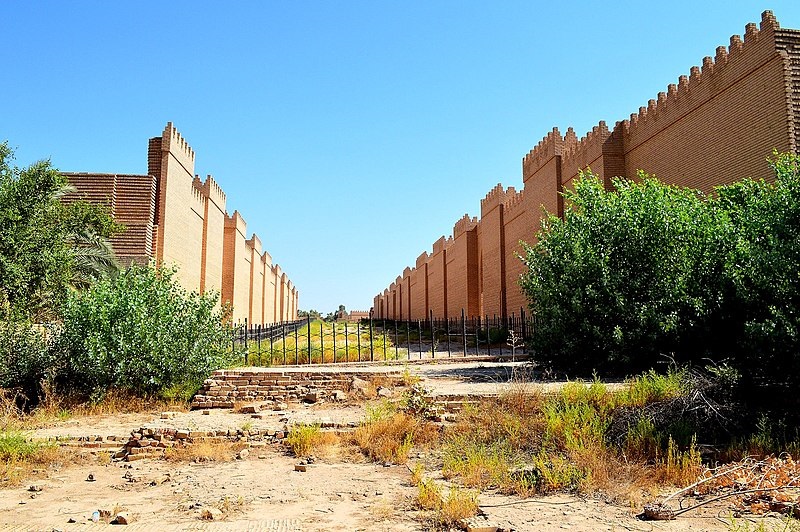The ancient Babylonians were known for tall towers, impractical gardens, and antagonizing ancient Judeo-Christians. But few people know that Mesopotamia was known for something else: a foodie destination of the ancient world.
Much of what we know about the Babylonian diet is based on four ancient tablets written in cuneiform. It wasn’t much to go on, but it did give scientists, historians, and researchers a small insight into the Babylonian food. What they found was that, much like their neighbors, the ancient Babylonians loved rich stews filled with fatty meats, strong herbs, and hearty vegetables.
For the longest time, these recipes remained under lock, key, and glass at the Yale Babylonian Collection in Yale University. As the world’s oldest known written recipes, the tablets were, for the longest time, viewed as ancient relics rather than as working cookbooks. But in early 2018, researchers from both Yale and New York University attempted something that hasn’t been done in over 4,000 years: cook the dishes in the cuneiform tablets.
Hosted by NYU’s Institute for the Study of the Ancient World and Department of Nutrition and Food Studies, the event entitled “An Appetite for the Past” showcased food products from various time periods such as Ancient China, Medieval Europe, the Roman Empire, and of course, the Mesopotamian Empire. Researchers from Yale, NYU, and Harvard used the latest culinary techniques and historical translations of the various recipes, allowing them to bring together archaeology and cuisine to create an event unlike any other.
Preparation

The first step was to decide which translation of the cuneiform tablets the researchers will work with. Because multiple translations exist of the same tablet, the researchers had to find the most common interpretation and work from there. Although a number of ingredients listed in the recipes are now long gone from the world, there were enough ingredients that were still around today to recreate them: lamb, milk, beets, grain cakes, and a type of beer bread were prominent aspects of the dish that the researchers sourced easily.
Prior to the event, the team in charge of the Babylonian recipes painstakingly studied the numerous cuneiform translations and the tablets themselves before painstakingly recreating every step of the cooking process. They then tested the recipes multiple times before presenting them at the event.
Because of the amount of ingredients, the labor that went into preparing them, and the amount of people required to cook them, the researchers believe that the recipes were intended for consumption by royals or the nobility. The researchers also suggest that, since cuneiform script was not widely read or understood by common Mesopotamians, the recipes were intended to record their culture’s culinary art, lest it be lost to the sands of time.
However, despite their presentation, the researchers were confronted with a couple of challenges: first, some ingredients no longer existed, so researchers had to come up with the closest approximations possible. Next, some recipes were poorly preserved, which means key passages were unreadable. Again, using historical research and context clues, the team had to take an educated guess as to how these tablets ought to be read.
As for quantities, the Babylonians didn’t always specify measurements: instead, much like home chefs, many of their recipes were “to taste”, which meant that the researchers had a bit of freedom and wiggle room. The Babylonians were, perhaps, the first culture to have perfected soups and stews. Unfortunately, due to the lack of measurements, the researchers had to guess whether each recipe would be a soup or a stew.
The Dishes
The researchers recreated 3 dishes: a vegetarian stew called “unwinding”, a beet-centric lamb stew called Tuh’i, and a Broth of Lamb that contained milk and lamb blood.
Researchers are not entirely sure why the vegetarian stew is called “unwinding”, with various theories attempting to explain it, ranging from a mistranslation of the Akkadian script to simply a description of its hearty and relaxing properties. The stew is made from leeks and onions, and then made hearty with plenty of dried lumps of crushed grains like barley, a common ingredient in Babylonian cooking.

Meanwhile, the Tuh’i is a lamb stew that is simmered together with beets. Cuts of lamb are sautéed in a pan until brown. Garlic, shallots, cilantro, and herbs are then sautéed in the lamb fat. The lamb is then reintroduced into the pan of vegetables and the whole thing is covered in a cooking liquid like chicken broth. It is then simmered for hours until the lamb is soft and succulent. This dish immediately became a crowd favorite, and was noted for its earthy taste, something one researcher described as “proto-borscht”.
The Broth of Lamb is a milk-based recipe that involves stewing cuts of lamb and aromatics in a milk broth that is thickened with lamb blood, a common Babylonian thickener. If it sounds unappetizing, that’s because it was: of the three dishes they cooked, the researchers cited this as their least favorite dish, both on the eyes and the palette.
A New Way to Experience History

Stews aren’t just a hearty and comforting food that people eat; it’s also one of the oldest methods of refined cooking. It is one of the hallmarks of a civilized society, but also, it is one of the most interactive ways of experiencing history. By recreating dishes as closely as possible to the original recipes, the researchers were able to give people a glimpse of what life was like more than 4 millennia ago.
By working with culinary historians and chefs, the Appetite for the Past team was able to not only recreate the dishes based on the recipes, but also understand their historical context vis-à-vis the existing cultures that stemmed from Mesopotamia and their links to one another.
While it may not be exactly like the dishes that the Babylonian upper crust had 4,000 years ago, the dishes they created were enough to give people a deeper sense of the Mesopotamian culture and provided everyone with a genuine connection with people who lived so long ago.



